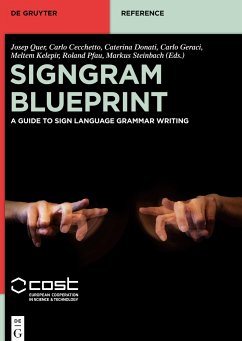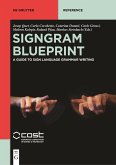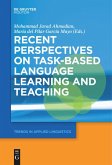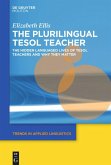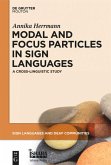We gratefully acknowledge the financial support of COST (European Cooperation in Science and Technology), funded by the Horizon 2020 Framework Programme of the European Union.
Current grammatical knowledge about particular sign languages is fragmentary and of varying reliability, and it appears scattered in scientific publications where the description is often intertwined with the analysis. In general, comprehensive grammars are a rarity. The SignGram Blueprint is an innovative tool for the grammar writer: a full-fledged guide to describing all components of the grammars of sign languages in a thorough and systematic way, and with the highest scientific standards.
The work builds on the existing knowledge in Descriptive Linguistics, but also on the insights from Theoretical Linguistics. It consists of two main parts running in parallel: the Checklist with all the grammatical features and phenomena the grammar writer can address, and the accompanying Manual with the relevant background information (definitions, methodological caveats, representative examples, tests, pointers to elicitation materials and bibliographical references). The areas covered are Phonology, Morphology, Lexicon, Syntax and Meaning. The Manual is endowed with hyperlinks that connect information across the work and with a pop-up glossary.
The SignGram Blueprint will be a landmark for the description of sign language grammars in terms of quality and quantity.
Current grammatical knowledge about particular sign languages is fragmentary and of varying reliability, and it appears scattered in scientific publications where the description is often intertwined with the analysis. In general, comprehensive grammars are a rarity. The SignGram Blueprint is an innovative tool for the grammar writer: a full-fledged guide to describing all components of the grammars of sign languages in a thorough and systematic way, and with the highest scientific standards.
The work builds on the existing knowledge in Descriptive Linguistics, but also on the insights from Theoretical Linguistics. It consists of two main parts running in parallel: the Checklist with all the grammatical features and phenomena the grammar writer can address, and the accompanying Manual with the relevant background information (definitions, methodological caveats, representative examples, tests, pointers to elicitation materials and bibliographical references). The areas covered are Phonology, Morphology, Lexicon, Syntax and Meaning. The Manual is endowed with hyperlinks that connect information across the work and with a pop-up glossary.
The SignGram Blueprint will be a landmark for the description of sign language grammars in terms of quality and quantity.

